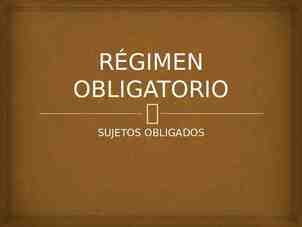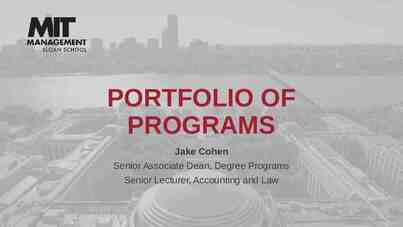Global Politics 2018-2023 Unit 3 and 4
58 Slides2.02 MB

Global Politics 2018-2023 Unit 3 and 4

At a glance The VCE Global Politics 2018-2023 replaces the interim Global Politics Unit 3 and 4 2016-2017. Minimal changes have been made with some minor changes to key knowledge.

Change to Key Skills Unit 3 &4 2016-17 2018-2023 research and synthesise contemporary evidence to draw conclusions. use contemporary examples and case studies to support explanations, points of view and arguments. In Unit 3&4 changes to the cognitive development of the skills

Key Terms and Concepts Must be explicitly taught Advice for Teachers will have a glossary for Units 1-4 In Unit 3 and 4 they are examinable

Case Studies “VCE Global Politics is a contemporary study and focus must be on examples and case studies from within the last 10 years. However, contemporary issues and events may need to be contextualised for students and this may require some investigation prior to this timeframe.” Study Design Teaching in 2022- Cases Studies from 2012 onwards Teaching in 2020- case studies from ? Onwards

Assessment School-assessed Coursework tasks have changed To ensure authentication of students work: ‒ Commercially purchased SAC’s must always be modified ‒ SAC’s used from previous years must always be modified It is the teachers responsibility to ensure that their SAC’s authenticate the Study Design

Assessment The exam specifications will be published early 2018 and will include a sample exam. In 2018, the examination will reflect changes in the 2018 -2023 Unit 3 and 4 Australian Politics Study Design. The sample examination will be updated to reflect the changes in the Study Design.

Unit 3 Global Actors AOS 1: Global Actors AOS 2: Power in the Asia-Pacific

Key Terms and Concepts All terms and concepts in the Key Knowledge must: ‒ Taught and learned ‒ Applied ‒ Linked Key Skills states that students must be able to: ‒ “define and explain key global politics terms and use them in the appropriate context” All terms are examinable The Advice for Teachers will include a glossary.

U3 AOS1 Outcome Unit AOS1 2016-2017 Unit AOS1 2018-2023 . the student should be able to evaluate the power of key global actors in the twenty-first century and assess the extent to which they achieve their aims. . the student should be able to evaluate the power of key global actors and assess the extent to which they achieve their aims and are able to challenge state sovereignty Key Knowledge change from challenges to “the impact on state sovereignty of: ” Changing borders to “contested borders” WTO is no longer included as a IGO

Unit 3.1 General Advice Sets the groundwork for understanding rest of the course: do not rush it Read the pre-blurb and ensure it is understood; examinable and contains important explanatory material – source of key terms and questions Websites of different global actors as a starting point for knowledge Useful websites – sign up to email alerts, file relevant emails for later use: Council Foreign Relations, Foreign Policy, Guardian Australia, Ajplus for short videos; AIIA lecture series, The Economist weekly

Unit 3.1 General Advice Update T&L task of media file: students establish twitter account and must follow 10 different relevant global actors; select 30 different tweets and explain why relevant to studies Excursions: Sea Shepherd in Williamstown; NGO offices in Melbourne – guest speakers; model UN assembly; short-answer questions (1-8 marks) on each global actor

Unit 3.1 Overview of changes Intergovernmental organisations IGOs (not IGGs) No WTO UN, IMF and ICC Useful starting point is their websites; aims; how they work; good examples of successful work; Criticism of these organisations helps to evaluate their power and impact SD pre-blurb: ‘manage and facilitate relations between states through their processes, protocols and legal arrangements. Students consider the ways these IGOs also have the capacity to challenge state sovereignty’

IGO Cartoon

Unit 3.1 T&L idea - UN In pairs students given one cartoon (such as the one previous) Devise 3 questions based on this cartoon that increase in difficulty NB: students will need a list of instructional verbs to assist them Students devise marking criteria for the questions – looking at the Chief Assessor report will help students to understand the marking process Students write ‘model’ answers based on criteria often leads to tweaking of questions and criteria Submit responses for marking Revision exercise: distribute pairs cartoons & questions to the rest of the class to complete

Unit 3.1 Non state actors – Potential case studies Greenpeace Daesh Crucial aspects to cover Aims Roles Power Ability to challenge state sovereignty Writing task – ‘Evaluate to what extent one nonstate actor is able to challenge state sovereignty.’

Unit 3.1 TNC Choose ONE TNC only Walmart Aims Roles Power Ability to challenge state sovereignty Do not limit to operations in simply one state Ensure evaluation of power is balanced: do some good! SD pre-blurb: ‘exploitative of host states, and by others as drivers of progress, skills and innovation’

States Unit 3.1 Aims, Role, Power Ability to challenge state sovereignty Russia and Ukraine US in Syria Learning activity Using the US and Syria as a case study, ask students to identify the following Areas where sovereignty is challenged Areas where sovereignty is not challenged Why are some areas able to be challenged and others not (teaching analysis – how and why)

Unit 3.1 Regional Groupings Specific ability to impact state sovereignty NATO EU Arab League

Unit 3.1 Contested Borders Specific ability to impact state sovereignty Sudan Ukraine Kashmir South China Sea Will require some context (pre ten year limit) Student answers must be based on events from within the last ten years

Unit 3.1 Issues that require multilateral resolution Libya Syria Sovereign debt crisis North Korea’s nuclear programme Any situation where one or two states are unable to find a resolution These situations will often include challenges to sovereignty These case studies should be chosen from case studies you are already undertaking

Unit 3.1 – Final thoughts Double up wherever possible Use aspects from 3.1 in other areas of study Focus your teaching on assisting the students to: Assess to the outcome Demonstrate the key knowledge Teach the key skills explicitly

U3 AOS2 Outcome Unit AOS1 2016-2017 Unit AOS1 2018-2023 . the student should be able to analyse and evaluate types of power as used by a specific Asia-Pacific state in the region in pursuit of its national interests. . the student should be able to analyse and evaluate the effectiveness of the use of various types of power by a specific Asia-Pacific state in pursuit of its national interests.

Key Knowledge and Skills AOS2 Key Terms nation and state are now in AOS1 National interests can be global – not only regional in focus (Eg. China trade and development in Africa, Australia seeking a closer relationship with the UK (post-BREXIT?) When studying regional relationships. Must use the listed Asia-Pacific states in the Study Design p. 32 Differing interpretations may depend on factors such as cultural identity, international relationships and state security

Unit 3.2 For whichever state you choose, you must have: Examples of: hard and soft power Military power Economic power (trade and aid) Political power Diplomatic power Cultural power (usually soft power) Students must still examine types of power AND foreign policy instruments Evaluate the relative importance

Unit 3.2 - Suggestions Collate a booklet of recent articles relating to each type of power and FP instrument Provide context for actions Locate sources and examples that facilitate evaluative comment ‒ Success ‒ Failure Types of power and national interests do not exist in isolation

Unit 3.2 - China Diplomatic power Global agreements (Climate) North Korea sanctions and statements Role in UNSC regarding Syria Military power South China Sea actions Aircraft carriers Missiles facing Taiwan

Unit 3.2 - Australia Cultural Power G’day USA program Koala Diplomacy International Students Military Power US alliance US troops in Darwin Training with USS carrier groups 26bn spending increase on defence Support of US in Iraq and Syria

Unit 3.2 - USA Diplomatic power Role in the UN Approach to the UN Application of veto Drafting of UNSC resolutions Relationships with allies (South Korea, Japan, Australia) Military power Syria & Iraq Role in Asia and South China Sea Increase in defence spending and nuclear capability

Final thoughts Focus your teaching on assisting the students to: Assess to the outcome Demonstrate the key knowledge Teach key skills explicitly Factors that shape the national interests Differing interpretations of the national interest

Unit 4 Global Challenges AOS 1: Ethical issues and debates AOS 2: Global crisies

U4 AOS1 Outcome Unit AOS1 2016-2017 Unit AOS1 2018-2023 . the student should be able to evaluate two global ethical issues from a range of perspectives, and analyse the effectiveness of global actors’ responses to these issues. . the student should be able to analyse the debates relating to TWO global ethical issues, and evaluate the effectiveness of global actors’ responses to these issues Cognitive change in the outcome statement.

Key Knowledge AOS1 Key terms - “international law” now only relevant term “International law encompasses a wide range of rules that might be seen to govern the actions of states in international relations such as treaties, declarations, bilateral and multilateral agreements and even decisions made by bodies such as the UN Security Council.” Teachers MUST be vigilant about choice of international law Selected law must enable students to demonstrate the KK and KS in addition to address the ethical debates Changes in the ethical debates for each issue.

Key Skills U4 AOS1 2016-17 2018-2023 define and explain key global politics terms and use them in the appropriate context analyse treaties relating to two ethical issues evaluate ethical debates surrounding two ethical issues analyse the effectiveness of responses by global actors to two ethical issues research and synthesise contemporary evidence to support arguments. define and explain key global politics terms and use them in the appropriate context analyse international law relating to TWO ethical issues analyse ethical debates surrounding TWO ethical issues, including the concepts of realism and cosmopolitanism evaluate the effectiveness of responses by global actors to TWO ethical issues use contemporary examples and case studies to support explanations, points of view and arguments

Unit 4.1 Key Terms: realism, cosmopolitanism, justice and ethics. Realism Realism is the ideology that the global political arena is made up of individual states and every state acts in its own national interests to ensure its sovereignty. Any cooperation made by states with other global actors is only to further their own national interests. Cosmopolitanism Cosmopolitanism is the ideology that humanity is one single community, regardless of state, culture or levels of economic development. All humans are equal and should be treated equally and global actors should act with this motivation.

Unit 4.1 – International Laws Possible Human Rights laws Convention on the Rights of the Child Convention against Torture Convention on the Elimination of all forms of Discrimination Against Women International Covenant on Economic, Social and Cultural Rights International Covenant on Civil and Political Rights International Covenant on the Elimination of all forms of Racial Discrimination European Convention on Human Rights

Unit 4.1 CEDAW case study Where has CEDAW had an impact? What impact has it had? How have various global actors responded to it? What are the differing perspectives to it from global actors? What are the challenges to achieving universal application of CEDAW? Address ethical debates – direct link to cultural challenges to the universality of human rights

Unit 4.1 – International Laws Possible People Movement laws Convention relating to the Status of Refugees Convention against Transnational Organised Crime (which includes Protocol to Prevent, Suppress, and Punish Trafficking in Persons, Especially Women and Children; and the Protocol against the Smuggling of Migrants by Land, Air, and Sea) Council of Europe Convention on Action against Trafficking in Human Beings

Unit 4.1 1951 Convention relating to the status of refugees case study Where has the 1951 Convention had an impact? What impact has it had? How have various global actors responded to it? What are the differing perspectives to it from global actors? What are the challenges to achieving universal application of the Convention? Direct link with obligations to asylum seekers and other refugees versus national interests including border security

Unit 4.1 – International Laws Possible Development Laws International Covenant on Economic, Social and Cultural Rights (particularly articles 11 - 15) Convention on the Elimination of all forms of Discrimination Against Women (particularly article 14) Convention on the Rights of the Child (particularly article 32) Convention on Environmental Impact Assessment In a Transboundary Context

Unit 4.1 Where has the CRC (Article 32 – Child labour) had an impact? What impact has it had? How have various global actors responded to it? What are the differing perspectives to it from global actors? What are the challenges to achieving universal application of the CRC? Direct link to differing strategies for poverty alleviation

Unit 4.1 – International Laws Possible Arms Control Laws Arms Trade Treaty Convention on the Prohibition of the Development, Production Stockpiling and Use of Chemical Weapons and on their Destruction Convention on the Prohibition of the Use, Stockpiling, Production and Transfer of AntiPersonnel Mines and on their Destruction Treaty on the Non-Proliferation of Nuclear Weapons

Unit 4.1 Where has the NPT had an impact? What impact has it had? How have various global actors responded to it? What are the differing perspectives to it from global actors? What are the challenges to achieving universal application of the CRC? Direct link to differing approaches to nonstate proliferation

Learning task Students consider two perspectives on the NPT USA (Cosmo?) There should be no nuclear proliferation Only the P5 should possess nuclear capability All other states must not pursue nuclear capability This guarantees international security North Korea (Realist) North Korea is under threat by a nuclear power Requires nuclear weapons to defend sovereignty US not upholding their obligations under NPT Students must find evidence and examples to support this difference of opinion relating to international security versus state security

Points to note Case studies must be selected that allow for analysis of the ethical debates Students should investigate opposing views in relation to the chosen international laws For all ethical issues, ensure students can present BOTH sides using examples Link all responses to realist and cosmopolitan perspectives

U4 AOS2 Outcome Unit AOS1 2016-2017 Unit AOS1 2018-2023 . the student should be able to explain two contemporary global crises and evaluate the effectiveness of responses to these. . the student should be able to analyse TWO contemporary global crises and evaluate the effectiveness of global actors’ responses to these Cognitive change in the outcome statement.

Key Knowledge AOS2 Removal of “ .and proposed solutions ” (2016-17) Change from difficulties to “challenges in achieving effective resolutions” Responses from relevant global actors and their effectiveness

Key Skills AOS2 2016-17 2018-2023 define and explain key global politics terms and use them in the appropriate context explain the key aspects of two global crises analyse causes of, and responses to, two global crises evaluate the effectiveness of proposed solutions and difficulties in achieving effective resolution to two global crises research and synthesise contemporary evidence to draw conclusions. define and explain key global politics terms and use them in the appropriate context explain the causes of, and responses to, TWO global crises analyse the key aspects of TWO global crises evaluate the effectiveness of responses to TWO global crises by relevant global actors analyse the challenges to achieving effective resolution to TWO global crises use contemporary examples and case studies to support explanations, points of view and arguments

Unit 4.2 – Armed conflict Syria Why has this conflict come about? What are the various responses? What are the roadblocks to resolution? How effective have efforts from global actors been achieving an effective resolution? How does this case study relate to the key aspects?

Unit 4.2 – Learning task Students to investigate intervention in the Syrian civil war by: Russia USA Iran Kurdish groups Present how effective these interventions were in bring about a resolution Collate list of ‘challenges to resolution’ from this process

Unit 4.2 - Terrorism Daesh (NST) & Syrian Government (ST) Why has terrorism occurred? What are the various responses? What are the roadblocks to resolution? How effective have efforts from global actors been achieving an effective resolution? How does this case study relate to the key aspects? Terrorism as an instrument of state policy – directly linked to Assad government intent and responses to the issue of Daesh terrorism

Unit 4.2 – Climate change Why has this crisis come about? What are the various responses? ‒ International cooperation (UNFCCC) ‒ Unilateralism (eg China, USA, Germany) What are the roadblocks to resolution? How effective have efforts from global actors been achieving an effective resolution? How do the chosen case studies relate to the key aspects? How have national interests been both effective and ineffective and finding a resolution to climate change?

Unit 4.2 – Learning task What are the various responses to Climate Change? International cooperation (UNFCCC and most recent agreements – eg Paris COP 2015) Unilateralism ‒ to prevent consequences (eg China or Germany ‒ to maintain economic interests (eg China and USA) ‒ to adapt to consequences (USA, China compared to Kiribati) These cases allow students to evaluate the effectiveness of responses and also how they reflect the challenges to resolving the crisis of Climate Change.

Unit 4.2 – Economic Instability Greek Sovereign Debt Crisis Why has this crisis come about? What are the various responses? What are the roadblocks to resolution? How effective have efforts from global actors been achieving an effective resolution? How does this case study relate to the key aspects? EU playing a role as stabilisers of global economy Wary of ten year time frame – focus on events within that window

Assessment Unit 3 and 4 2016-2017 Unit 3 and 4 2018-2023 For each outcome, select one or more of the following: a multimedia presentation a case study an essay a report short-answer questions an extended response a multimedia presentation a case study an essay a report a test structured questions short-answer questions an extended response.

Rubrics

Questions

Contact Gerry Martin- Curriculum Manager (History and Civics) Telephone: 61 3 9032 1694 Mobile: 04 428 039 083 e-mail: [email protected]






